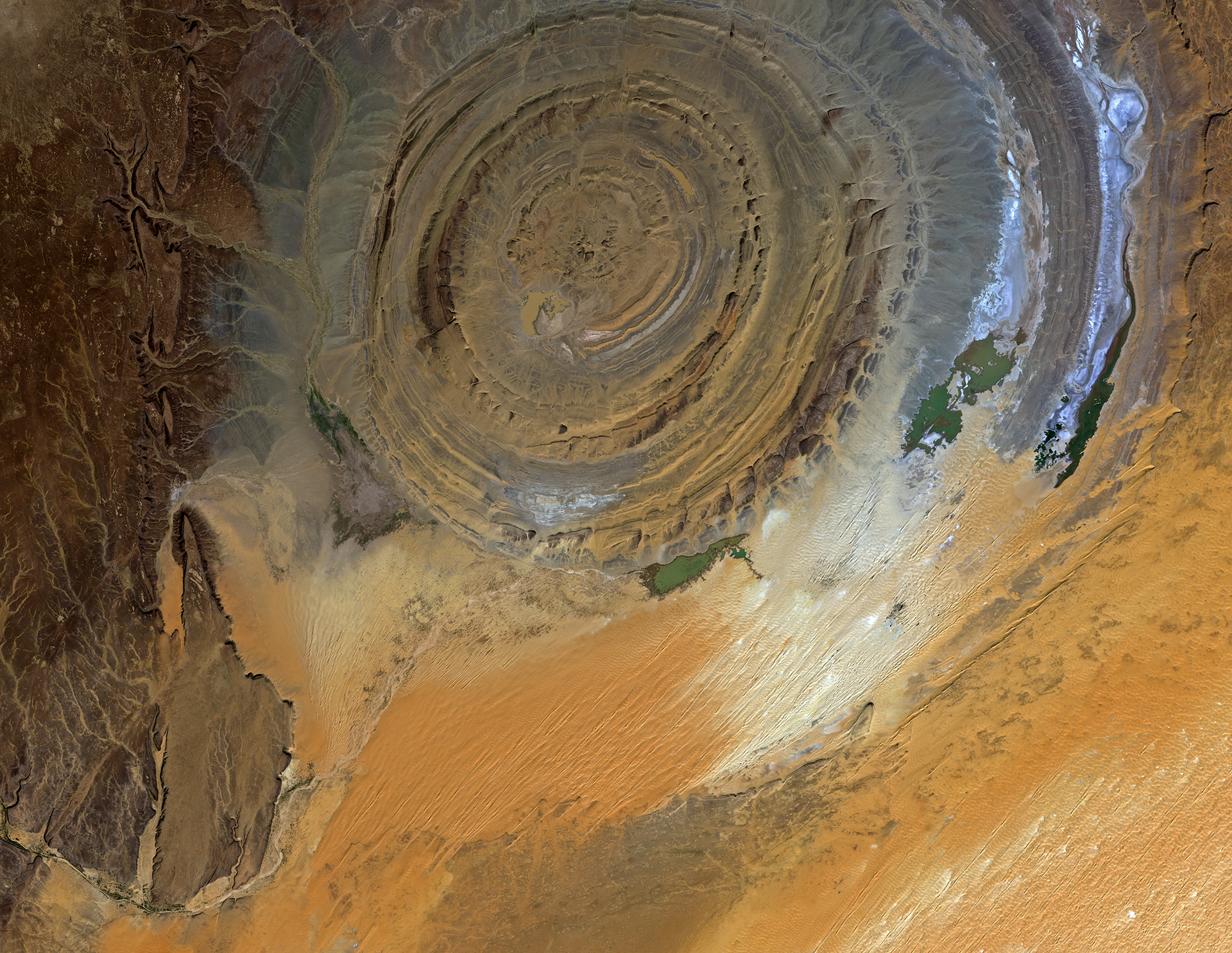The Eye Of The Sahara
The Richat Structure can be seen from space and might be 100 million-years-old.

A satellite image of the Richat Structure in Mauritania, acquired on November 23, 2010, by the Advanced Visible and Near Infrared Radiometer on Japan’s ALOS satellite. Photo courtesy of JAXA/ESA
A massive circular rock formation marks the desert in Mauritania like a target—it’s the “Eye of the Sahara.” Easier seen from above than from the ground, the Richat Structure (or Guelb er Richat), as it’s formally known, has long been a landmark for space crews returning to earth, indicating that they’d soon be approaching their landing pad in Florida.
Measuring about 25 miles in diameter, the structure was once thought to be the result of a meteorite impact. Further geological research, however, has disproved that theory—there isn’t enough evidence of melted rock at the site, which would normally be present after such an event, according to Michel Jébrak, a professor at the University of Quebec in Montreal who specializes in mineral resources and who’s done multiple studies on the Richat. Instead, the structure most likely formed as the supercontinent Pangaea broke up and gave way to the Atlantic Ocean about 100 million years ago.
As the ocean opened, an intrusion of magma slowly pushed up from earth’s mantle to the crust, Jébrak explains, which had a doming effect that gave the Richat its circular shape. Several concentric ridges, sculpted by erosion, make the structure difficult to traverse. “It’s like a labyrinth,” says Jébrak.
Aside from its prominence in the landscape, the Richat is also extraordinary for the collection of igneous rocks that formed there at varying depths. Four types can be found today: kimberlites, which occur at about 125 miles below the earth’s surface and sometimes contain diamonds; carbonatites, which come from about 30 miles below, are very scarce, and may contain rare earth elements, according to Jébrak; black basalts and basalt-like gabbros; and rhyolites, rich with silica.
Jébrak suggests that there may be a possible Richat “footprint” in other parts of the world—dust or rocks from the time of the Richat’s intrusion could have been picked up by the Saharan wind and carried to distances as far as Israel. Indeed, rocks that formed during a similar doming process at Yellowstone National Park in Wyoming have traveled as far as Montreal by wind. (“So it’s a funny story [that] I crossed the Atlantic from Montreal to Mauritania, just to find the kind of rocks exactly similar to the ones that are in the middle of Montreal,” Jébrak laughs.)
Jébrak says he’s eager to return to Mauritania and do more research on the Richat’s rocks and origins, but has lately been restricted by warnings of terrorist presence in the region.
Chau Tu is an associate editor at Slate Plus. She was formerly Science Friday’s story producer/reporter.